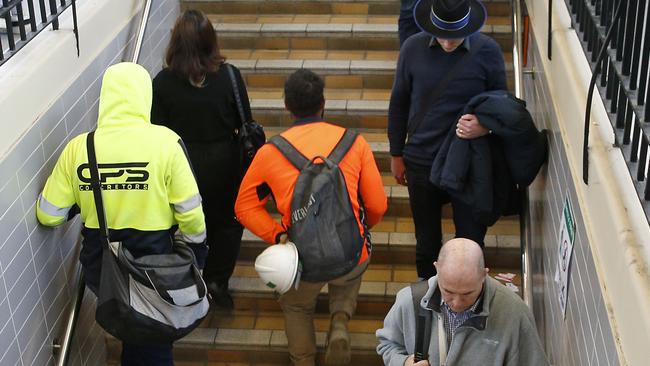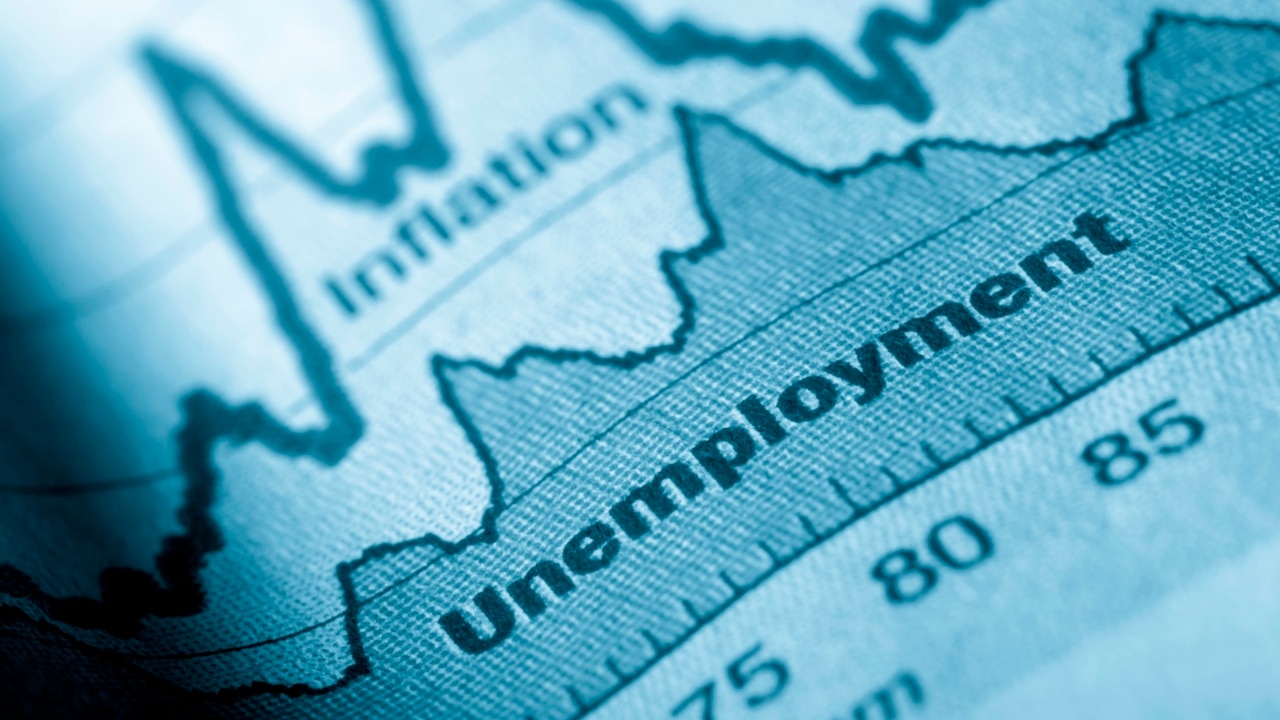Unemployment rises as participation rate jumps
Unemployment lifted to 4.2 per cent in July despite an extra 58,200 people finding work, with economists saying it further dimmed the chances of an RBA cut being delivered this year.

Unemployment lifted in July to 4.2 per cent even as the economy added an extra 58,200 jobs, with the uptick fuelled by a record high participation rate on the back of still soaring net overseas migration and more locals looking for work.
Figures released on Thursday by the Australian Bureau of Statistics revealed the jobless rate had climbed slightly higher to 4.2 per cent – up from 4.1 per cent in June – because of an increase in the number of people looking for work.
The labour force figures revealed that Australia’s participation rate climbed by 0.2 percentage points to a new record high of 67.1 per cent.
Economists said the fact nearly 60,000 people found work while only 23,900 people lost jobs reaffirmed expectations the Reserve Bank would be extremely cautious about providing interest rate relief any time soon.
The creation of 58,200 jobs was almost triple the consensus estimate of 20,000.
Anthony Albanese told parliament the uptick in unemployment reflected “difficult times” for many Australians, but said Labor had created 989,000 jobs since winning government in 2022 – more than in the first two years of any previous government.
“We are also seeing a record high participation rate of 67.1 per cent and, importantly, a new record low gender pay gap of just 12.5 per cent,” the Prime Minister said.
Jim Chalmers said the data showed the government was making progress in achieving its objective of trying to tame inflation “without smashing jobs or the economy”.
While maintaining its central case scenario for a first rate cut in November, the CBA said it was now “growing uneasy, given the shortening runway to achieve the data configuration required for the RBA to feel comfortable cutting the cash rate, especially after today’s employment print”.

HSBC was surprised at “just how strong job creation continues to be in Australia” and noted the “strong employment print will remind them (the RBA) that it may still be possible that their next rate move could have to be up.”
George Washington University assistant professor of economics Steven Hamilton said the 60,000 new jobs created in Australia in a month was “absolutely bonkers. That would be like 700,000 new jobs in the US.”
KPMG chief economist Brendan Rynne said the labour market had shown “continuing resilience in the face of economic slowdown” and “in terms of interest rates, Australia still has a way to go before they can be cut”.
Opposition Treasury spokesman Angus Taylor said the number of Australians unemployed was at its “highest level since the election”.
“Australians have seen the sharpest fall in living standards among peer countries. A record number of businesses have gone insolvent, and real wages continue to go backwards,” he said.
“We need a back-to-basics economic agenda in order to have a low inflation, strong growth economy.
“But Anthony Albanese and Jim Chalmers continue to ignore the pain caused by their homegrown inflation.”
Kate Lamb, ABS head of labour statistics, said unemployment had increased to 637,000 people in July – its highest level since November 2021 – but remained “around 70,000 people below its pre-pandemic level”.
“The unemployment rate of 4.2 per cent was also the highest since November 2021, but was 1.0 percentage point lower than March 2020.”
Across the month, the number of full-time positions soared 60,500, but the increase was slightly offset by a decline in the number of part-time roles, down 2300, seasonally adjusted data showed. About 38,000 new jobs need to be created every month to keep the unemployment and participation rate stable.
CreditorWatch chief economist Anneke Thompson said the latest figures showed that more and more people were entering the workforce, looking for or getting a job.
“While there are many reasons as to why people who were not in the workforce choose to enter back in, it is highly likely that the high cost of living and high interest rates is resulting in more people needing to find work to cover additional costs,” she said.
The latest figures revealed that those in work or looking for employment had grown by more than 80,000 people in July.
Employment growth had also surpassed population growth, with the employment-to-population ratio rising 0.1 ppt over the month to 64.3 per cent.
The ABS figures revealed the working age population had increased by 51,500 in July.
Deloitte Access Economics partner Stephen Smith said the key figure that pointed to the health of the economy was the unemployment rate, noting that it was “continuing to tick up” in large part because “population growth remains very strong”.
He said population growth would slow throughout the course of the financial year “and, as it does, it will expose more cracks in the labour market”.
He expected the unemployment rate to reach about 4.5 per cent by the end of the year, higher than the 4.3 per cent being forecast by the RBA.
Overseas and arrivals departures data released on Thursday showed that in the year to June, there had been a total of 1,525,610 arrivals and 1,762,410 departures.





To join the conversation, please log in. Don't have an account? Register
Join the conversation, you are commenting as Logout